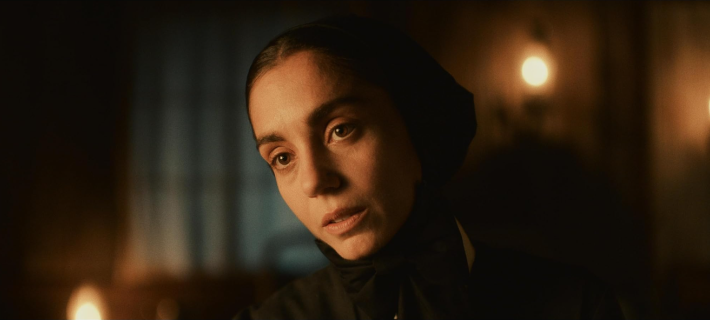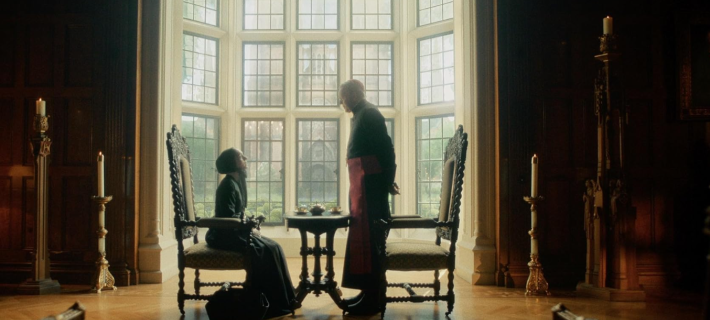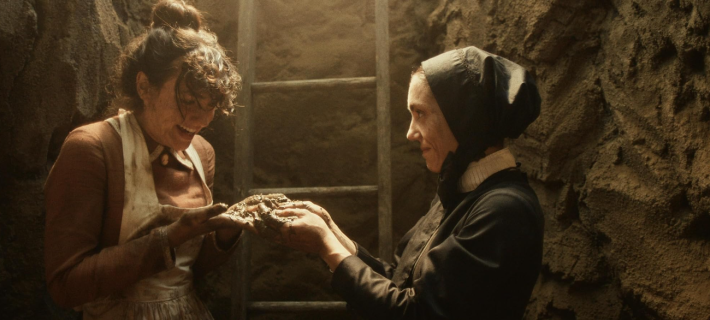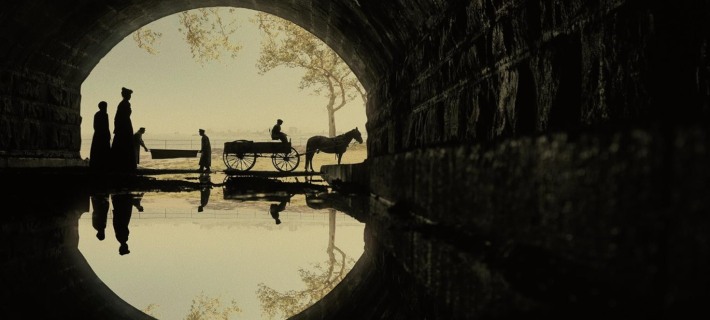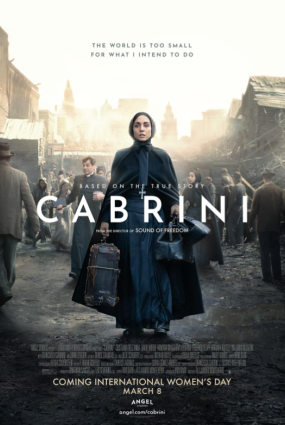Cabrini
Stars: Cristiana Dell'Anna, David Morse, Romana Maggiora Vergano, Virginia Bocelli, Giancarlo Giannini and John Lithgow
Director: Alejandro Monteverde
Scriptwriters: Rod Barr and story by Alejandro Monteverde and Rod Barr
Composer: Gene Back
Cinematography: Gorka Gomez Andreu
Lupin Film/Angel Studios
Rating: PG-13
Running Length: 160 Minutes
I grew up not far from a large church that I called Saint Francis Cabrini and it was known for their wonderful autumn spaghetti suppers as a fundraiser. In later years, I realized my error and the patron saint was not a man, but an Italian woman, named Saint Francesca Xavier Cabrini, who founded churches, schools and hospitals around the world. She was the first American citizen to be canonized as a saint. Director/co-scriptwriter Alejandro Monteverde gives us the early days of Saint Francesca from life in Italy to arriving in New York City. Poverty is abundant throughout the world, and shown here in Italy and America. Obstacles are always present, both in keeping healthy and dealing with men in the distinctly masculine society of that time, which is shown here in 1889, when the Sisterhood lands in New York City. Cinematography by Gorka Gomez Andreu gives us, in depth, the poverty of the time. However, in contrast to that, Gene Back’s soundtrack could be softer for better effect.
We begin with the face of actress Cristiana Dell’Anna as she takes over the role of Saint Francesca with strength. This face, with almost glowing eyes, will bend people to help her on her quest to erase poverty. She always wore a black habit that designated her position and also was a shield to protect her from uncouth comment. She is not a well person, battling health issues throughout her life. The lady would like to be a missionary to China, but is continually turned down by the church hierarchy---stay where you belong---so she ends up putting together her own Order of women. Eventually, the clergy and becomes weary of her and sends her to America to either win or lose. These moments between the Sister and the Pope are well played. You already know, she is going to win, the woman has the energy of a steam locomotive at full speed. Through the years, we see difficulties in financing, purchasing, and running an Order, then a school, then a hospital, but always---at the last minute—there is help. Other women in the cast, Romana Maggiora Vergano, Virginia Bocelli and Eugenia Forteza have their moments.
The men in this film are two religious figures and the Mayor. Starting with David Morse as an Archbishop who fights the Sister whenever he can. Then, there is Giancarlo Giannini as Pope Leo XIII who privately has admiration for the Sister, but in public has to deny most of her requests. John Lithgow is a New York Mayor who sees the Sister as a troublemaker and, also, tries to stall her whenever he can. Unfortunately, the scenes of women against men in business, still goes on today. Power is achieved and held in high esteem above everyone’s head.
The camera is actually part of the cast in this film, capturing moments of anguish, illness, children in danger, children working in dire conditions, beautiful skies and expressions on faces. Gorka Gomez Andreu works the camera at just the right angles at just the right time.
On one hand this is a religious film, and on the other hand, this film is about the life of the first American citizen saint, including life at the end of the 19th century when disease, poverty and hunger were commonplace with no help on the horizon. The main character is a woman, which makes this interesting as to comments and gestures from men and women. A language of their own. The gray backgrounds show what life is like to most of the people, while bright, elegant house furnishings are what the wealthy see every day. The turn of the century is coming and with it, there will be change---but, because of poor conditions, many will not see it. The name "Cabrini," however lasts for lifetimes.

Copyright 2024 Marie Asner

